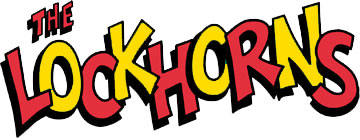Bill Hoest
Bill Hoest was the creator of The Lockhorns (syndicated to 500 newspapers in 23 countries), Agatha Crumm, What a Guy!, Bumper Snickers for the National Enquirer and Laugh Parade and Howard Huge for Parade magazine.
Born in Newark, New Jersey, Hoest spent two years in the Navy then studied art at Cooper Union. In 1948, he was hired as a greeting card designer with Norcross Greeting Cards. Bill left Norcross in 1951 to become a freelance cartoonist. His cartoons appeared in Collier’s, Playboy, The Saturday Evening Post and many other magazines.
Hoest became an assistant on Harry Haenigsen’s comic, Penny. After an injury kept Haenigsen away from the drawing board, Hoest took over most of the work. In 1970, Hoest left to start his own strip, My Son John, for the Chicago Tribune New York News Syndicate.
Perhaps Bill’s biggest success came with the syndication of what was originally titled, The Lockhorns of Levittown. The single panel’s immediate success and expansion across both national and international markets meant that a name change was in order. While Levittown was famous for it’s affordable housing for returning servicemen and home to a new commuter society, the strip now appealed to a national audience and the name was shortened to The Lockhorns.
In addition to all his other projects, Bill became the cartoon editor of Parade magazine in 1979. While in that position, he created the feature Laugh Parade. Laugh Parade consisted of several unrelated cartoons. In 1981, added Howard Huge, to that section of the magazine. Howard Huge, was a single panel cartoon based on the Hoest family’s St. Bernard.
Bill regularly spent ten hours a day at his drawing board. “It is a business, and I have to treat it like a business. I keep busy. That’s the way I make my living.” After his untimely passing, his assistant, John Reiner continued to illustrate all the features, while his widow, Bunny Hoest, took over the scripting. A few thoughts on Bill from John:
“Bill insisted on doing each of his comics meticulously. The artwork, writing, lettering and inking were all done in such a way as to meet his high self-imposed standards. I came to realize that his success, which so many cartoonists young and old tried to analyze, was the result of a simple rule: Learn to do each segment of a comic professionally. Bill Hoest could draw well, letter attractively and legibly, design in an eye-catching fashion, direct and control the action and expression of his characters, and write material that was genuinely funny. He then blended the elements to produce work that stood out on the comics page. I must now meet that same standard of excellence.”
He was president of the National Cartoonists Society at the time of his death in 1988. Bill received three National Cartoonists Society awards. The Lockhorns was named the best syndicated panel of 1976 and 1980 and he also won the gag cartoon division in 1977.


